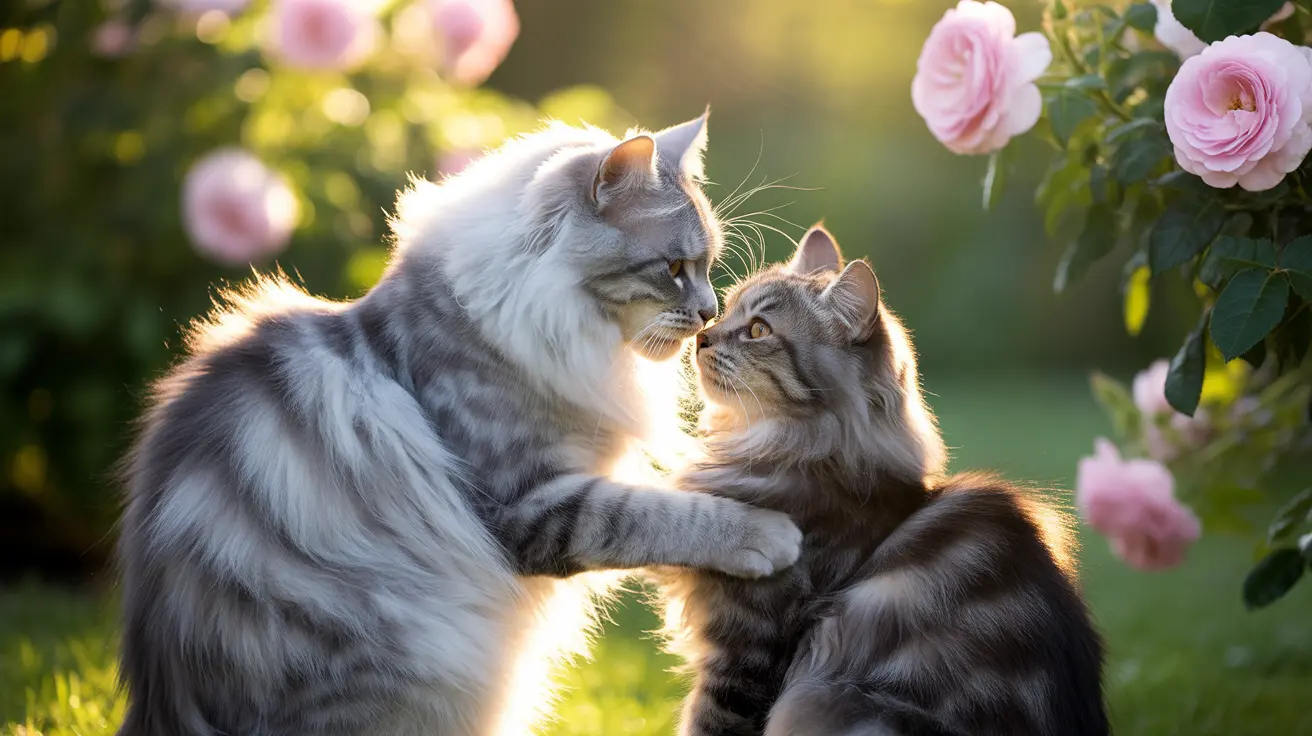Many animal lovers are fascinated by the romantic notion of animals forming lifelong partnerships. While some species like swans and gibbons are known for their monogamous relationships, cats follow a distinctly different pattern. Understanding feline mating behavior reveals fascinating insights into why cats don't mate for life and how their reproductive strategies have evolved.
The Truth About Feline Mating Patterns
Cats are naturally non-monogamous animals, with both males and females mating with multiple partners throughout their lives. This promiscuous mating strategy serves important biological purposes, including ensuring genetic diversity and maximizing reproductive success. Unlike the small percentage of mammals that form lifelong pair bonds, cats have evolved to prioritize reproductive efficiency over partnership.
Understanding the Biology of Cat Reproduction
Female cats are seasonal breeders, typically becoming fertile between spring and autumn. They can reach sexual maturity as early as 4-6 months old, making them incredibly efficient reproducers. During heat cycles, females may mate with multiple males, sometimes up to 30 times in a single cycle.
These multiple matings serve a crucial purpose. Females typically need several copulations within a 24-hour period to successfully ovulate, and mating with different males increases the chances of successful pregnancy. This biological mechanism has evolved to ensure the survival and genetic diversity of the species.
The Role of Male Cats in Mating
Male cats exhibit equally non-monogamous behavior, often mating with multiple females during breeding seasons. They compete for mating opportunities through physical confrontations and territorial control. This competition ensures that the strongest and most successful males pass on their genes, contributing to the overall health of the feline population.
Social Bonds vs. Mating Behavior
While cats don't mate for life, they are capable of forming strong social bonds. These bonds can occur between cats living together or between cats and their human companions. It's important to distinguish these social attachments from mating behavior - they serve different purposes and are driven by different biological and emotional needs.
The Impact of Multiple Mating on Reproduction
One fascinating result of cats' promiscuous mating behavior is the phenomenon of superfecundation, where kittens in the same litter can have different fathers. This natural occurrence further demonstrates how cats have evolved to maximize genetic diversity within their populations.
Frequently Asked Questions
Why do cats not mate for life like some other animals?
Cats have evolved a reproductive strategy that prioritizes genetic diversity and successful reproduction over pair bonding. This strategy allows for stronger offspring through varied genetic combinations and increases the chances of successful pregnancy through multiple matings.
How do cats form social bonds with other cats or humans if they are not monogamous?
Social bonding in cats is separate from mating behavior. Cats can form strong emotional attachments through shared experiences, mutual grooming, and regular positive interactions, but these bonds are not related to reproductive partnerships.
What are the biological reasons behind a cat's promiscuous mating behavior?
Female cats are induced ovulators, meaning they need multiple matings to trigger egg release. This biological mechanism, combined with the benefits of genetic diversity, has shaped cats' promiscuous mating behavior.
Can neutering or spaying reduce the likelihood of unwanted litters in cats?
Yes, spaying and neutering are highly effective in preventing unwanted litters. These procedures also help control the feral cat population and can reduce certain behavioral issues associated with mating.
Why do littermates sometimes have different fathers, and how common is this phenomenon in cats?
Multiple paternity in cat litters is common due to females mating with several males during their heat cycle. Each egg can be fertilized by sperm from different males, resulting in littermates with different fathers.
Conclusion
While cats may not mate for life, their reproductive strategy has proven incredibly successful for the species. Understanding these natural behaviors helps us better care for our feline companions and appreciate their unique biological adaptations. For responsible pet ownership, spaying and neutering remain the best ways to manage cat populations while allowing our pets to form the social bonds that enrich their lives.






